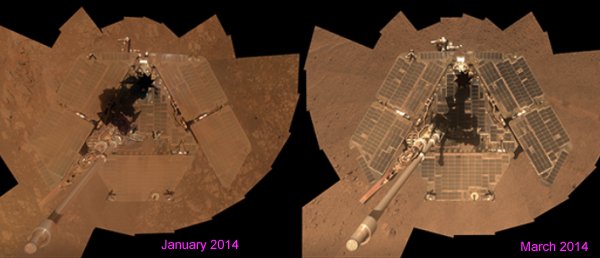
Opportunity – The Solar Powered Mars Rover
Opportunity was created for a 3 month stint on Mars – this past Sunday marks 12 years since it first landed in the 22 meter crater called Eagle Crater on January 24th 2004. The rover survived another Martian winter and managed to stay very active over this year’s solstice. With the solstice over, Opportunity will be exposed to more and more sunshine for the rest of 2016.
“Opportunity has stayed very active this winter, in part because the solar arrays have been much cleaner than in the past few winters,” said Mars Exploration Rover Project Manager John Callas, of NASA’s Jet Propulsion Laboratory, Pasadena, California.
The environment on Mars this winter lent a helping hand by producing wind that cleaned the rovers solar panels and helped it to produce more energy and be more active over the winter period. Researchers used Opportunity to examine larger and even more distant craters over the years. Since 2011 its focus has been on another 22km wide crater named Endeavour.

During this winter, Opportunity was examining rocks on the southern side of “Marathon Valley” which slices through Endeavour Crater. The solar powered rover also has a robotic arm with an abrasion tool that it used to remove surface crust from a rock. It then helped researchers examine the exposed interior with other tools on its robotic arm. Work carried out over winter has kept the solar panels tilted towards the sun crossing the northern sky and maximising electricity generation.
According to the Nasa website, the solar panels are currently generating more than 460 watt hours per day. That is up about 40% from earlier in this Martian winter, but Opportunity has been able to conduct power-intensive operations such as driving and rock-grinding throughout the winter. By contrast, during Opportunity’s first Martian winter on the Endeavour rim, power generation dipped below 300 watt-hours for more than two months, and the mission refrained from driving or rock-grinding for more than four months.
